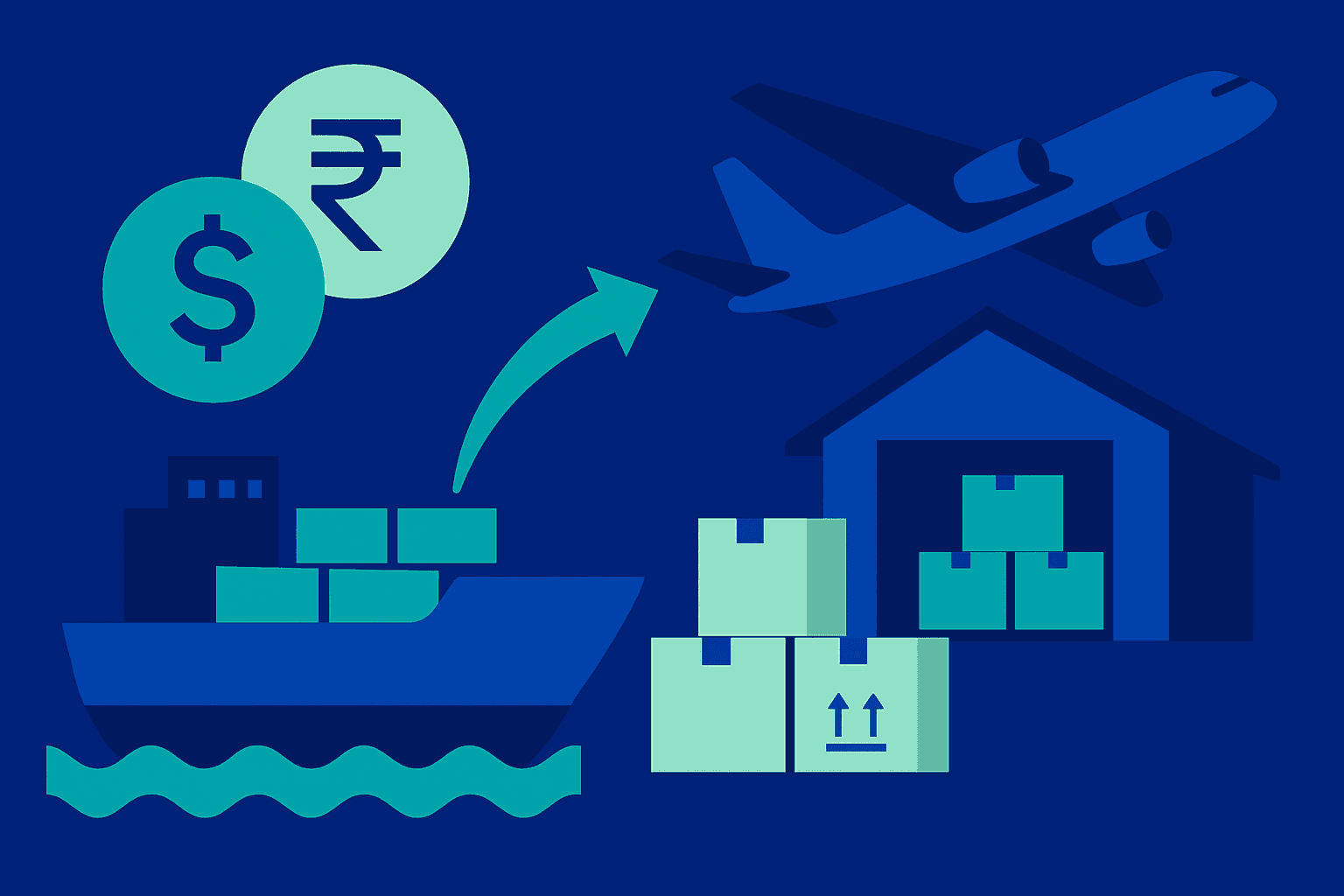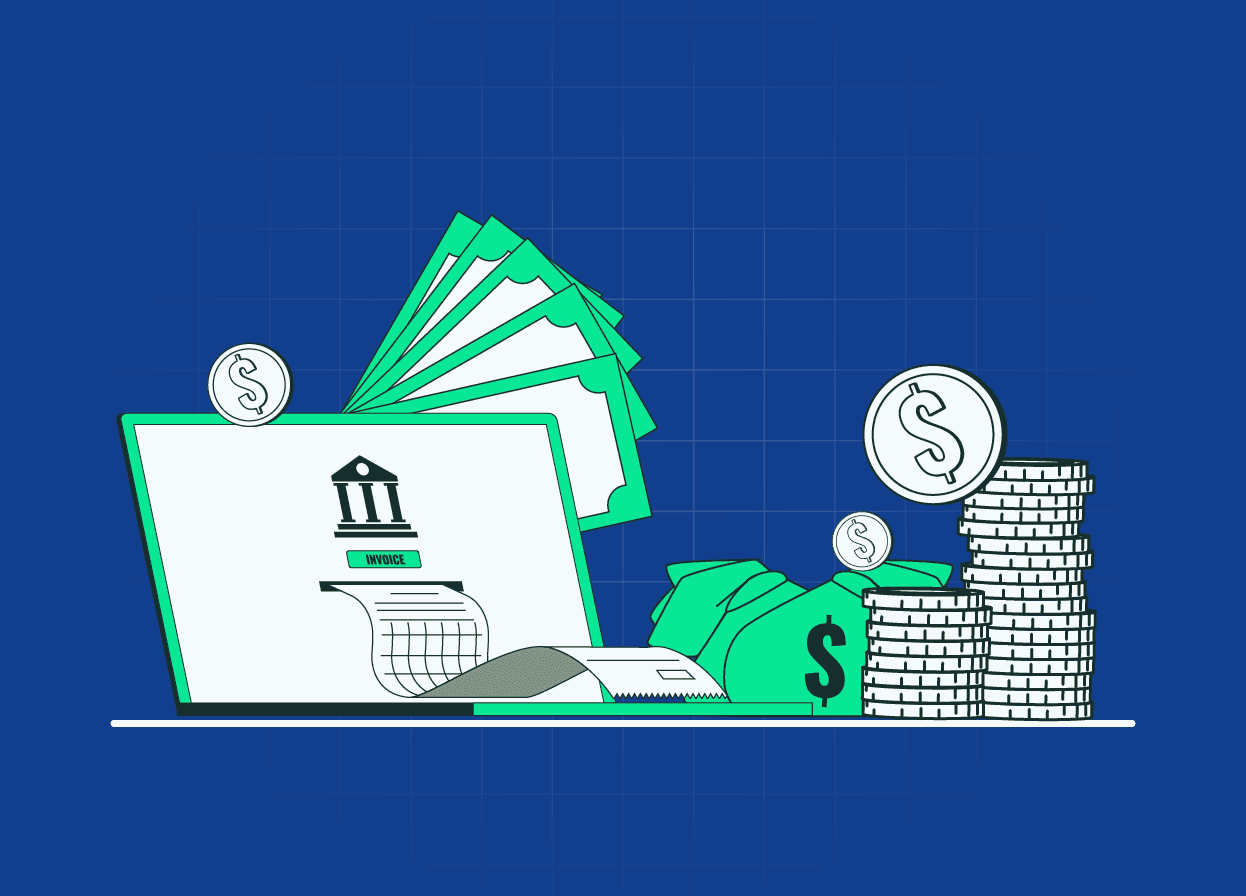Stripe vs PayPal for International Payments 2025

Indian businesses today often ask Stripe vs PayPal: which is better for international payments? Both platforms handle cross-border transactions, but they differ in costs and features.
For example, PayPal operates in 200+ countries (25 currencies) while Stripe is in 46 countries (135+ currencies). PayPal is easy for freelancers and e‑commerce sellers (and even provides a digital FIRA certificate for Indiapaypal.com), whereas Stripe is developer-friendly, great for SaaS, and charges slightly lower fees on big payments.
In this guide, we’ll break down fees, currency support, compliance, and use cases for each. By the end, you’ll know which one fits your needs – or if an India-focused solution like Skydo (with live forex rates and auto FIRAskydo.com) might serve you better.
Stripe vs PayPal: Key Differences at a Glance
Global Reach: PayPal is accepted in over 200 countries; Stripe is live in about 46 countries.
Currency Support: Stripe handles 135+ currencies, PayPal about 25.
India Availability: Stripe is invite-only in support.stripe.com (limited signup); PayPal is widely available and automatically converts payments to INR for withdrawal.
Transaction Fees (Int’l): Stripe charges 4.3% + 2% FX (≈6.3% total) on international card payments. PayPal charges 4.4% + a fixed fee (≈₹0.30 on USD) plus ~3–4% currency markup. Overall, Stripe usually leaves more INR in your account for large payments.
Developer Tools: Stripe offers advanced APIs and custom checkout options. PayPal’s setup is more plug-and-play but less customizable.
Compliance (FIRA for India): Stripe provides a “payment advice” via its partner bank to help you get a FIRC from your bank. PayPal automatically issues a free monthly digital FIRA for all inbound payments.
Each of these points is explained in detail below.
What is Stripe?
Stripe is a U.S.-based payments platform popular with startups and tech companies. It provides a developer-first experience (well-documented APIs for subscriptions, invoicing, etc.). Key facts:
- Currencies: Accept payments in 135+ currencies worldwide.
- Pricing: For most international cards, the fee is 4.3% + 2% for currency exchange. (No monthly fee.)
- Indian Context: Stripe India accounts are invite-only, so you must apply and qualify. It accepts only card payments for inbound cross-border funds. For compliance, Stripe mails you a payment advice from Standard Chartered Bank to obtain a FIRC, but there’s no automated FIRA.
- Use Case: Ideal for SaaS platforms, marketplaces, or businesses needing custom billing flows. If you sell subscriptions or need tight control over checkout, Stripe’s tools are unmatched.
(Interested? Book a demo to see how a Stripe-like setup could work with Skydo’s India-friendly features.)
What is PayPal?
PayPal is a well-known payment network (founded 1in 998) used by freelancers, online stores, and marketplaces globally. Highlights:
- Global Reach: Works in 200+ countries with ~25 currencies
- User-friendly: No developer skills needed. Buyers and sellers trust the PayPal brand.
- Fees: Standard transaction fee is 4.4% + fixed on initial payments (plus ~3–4% on currency conversion). There are no monthly fees for basic accounts.
- Indian Context: PayPal converts incoming dollars to INR at payout time. However, some features like PayPal credit and BNPL are not supported in India
- Compliance: Critically for exporters, PayPal sends you a free monthly digital FIRA (Foreign Inward Remittance Advice) automatically, a huge compliance benefit.
- Use Case: Great for freelancers, consultants, and small e-commerce sellers. Most clients already have PayPal, so you can bill just with your email. It’s also integrated with marketplaces like Upwork, Fiverr, and Etsy.
Stripe vs PayPal: Fees & Pricing
When you receive international payments, transaction fees and exchange markups directly impact your earnings.
Both Stripe and PayPal charge a percentage plus currency fees. For example, on a $5,000 payment, Stripe’s rate (~4.3% + 2%) comes to about 6.3% while PayPal’s rate (~4.4% + fixed + ~4% FX) is around 8–9%.
In practice, that meant retaining around ₹398,500 via Stripe vs ~₹390,000 via PayPal
| Fee type | Stripe | PayPal |
| International Transaction Fee | 4.3% (on international cards) | 4.4% + fixed fee (varies by currency) |
| Currency Conversion Fee | 2% markup over mid-market rate | 4% markup over mid-market rate |
| Total Effective Charges | Around 6.3% (all-inclusive) | Around 8.4% (all-inclusive) |
| FIRA Availability (India) | Not available | Available digitally |
| Withdrawal to Indian Bank | Manual (Stripe is invite-only in India) | Automatic (typically within 24–48 hours) |
| Monthly/Account Maintenance | None | None |
| Example (on $5k) | ≈₹398,455 received | ₹390,048 received |
Note: These fees can change by country. For India, Skydo’s flat-rate and live exchange model can beat both (e.g. zero forex markup, instant FIRA).
Cross-Border Features: Stripe vs PayPal for Indian Users
When it comes to international payments, businesses care about how fast they get paid, which currencies are supported, and how flexible the platform is in terms of payment methods and compliance.
Let’s look at how Stripe and PayPal compare for Indian freelancers and exporters:
Stripe
- Payment Methods (India): Currently, Stripe India primarily supports card payments (Visa, Mastercard) for receiving international payments. Payment links, invoicing, and embedded checkouts are also available for client invoicing globally.
- Currency Support: Accepts over 135 currencies, with automatic conversion to INR during settlement.
- Settlement Speed: Stripe generally takes 7–10 business days for first payments (due to compliance checks), and 2–5 days for subsequent payouts to Indian bank accounts.
- FIRA & Compliance: Stripe does not offer Foreign Inward Remittance Advice (FIRA), which may require Indian businesses to manually coordinate with banks for documentation, especially for GST or export benefits.
PayPal
- Payment Methods (India): Offers multiple options to international clients: credit/debit cards, PayPal balance, and linked bank accounts (ACH in the U.S.). This flexibility often makes it easier for clients to pay, especially in creative or consulting industries.
- Currency Support: Supports over 25 currencies and automatically converts to INR at the time of withdrawal.
- Settlement Speed: PayPal typically settles to Indian accounts within 1–3 business days after withdrawal is initiated.
- FIRA & Compliance: PayPal does provide a monthly consolidated FIRA, downloadable from the account dashboard, making it easier for Indian freelancers and exporters.
Use Cases: Who Should Use Stripe vs PayPal?
Both Stripe and PayPal are powerful platforms, but they’re built with different users in mind. Your choice depends on what you sell, where your clients are, and how you operate.
✅ Stripe: Best For Tech-Forward Businesses
Stripe is ideal for:
- SaaS companies with recurring subscriptions
- Startups that want a scalable payment infrastructure
- Developers who need deep integration and API flexibility
- Businesses selling globally via custom platforms
Why choose Stripe? If you’re building a product or marketplace that needs complete control over checkout, invoicing, and backend logic, Stripe’s developer-first ecosystem is unmatched. Think of Stripe as a “payments operating system” for modern businesses.
⚠️ However, Indian users should note:
- It’s invite-only in India and not available for all business types
- You’ll need external help (bank/FIRC agents) for compliance documents like FIRA
- Card-only acceptance may limit how easily clients can pay
✅ PayPal: Best For Freelancers & SMBs
PayPal is ideal for:
- Freelancers & consultants working with global clients
- Creative professionals (writers, designers, editors) invoicing individuals
- SMBs offering one-time services
- E-commerce sellers using marketplaces like Etsy or eBay
Why choose PayPal? It’s easy to use, widely trusted by clients, and doesn’t require any technical setup. Most international clients already have PayPal accounts, so you just share your email and get paid.
📎 What makes it freelancer-friendly:
- Clients can pay via PayPal balance, ACH, or cards
- You receive a monthly FIRA for compliance
- Faster onboarding with no code or dev work needed
| Business Type | Recommended Platform |
| SaaS / Recurring Billing | Stripe |
| Tech Startups | Stripe |
| Freelancers | PayPal |
| Consultants / Coaches | PayPal |
| E-commerce (Etsy/eBay) | PayPal (Stripe too in certain cases) |
| Custom Marketplaces | Stripe |
(Not sure? Our experts can help you decide. Book a demo to discuss your specific needs.)
Stripe vs PayPal: Best Alternatives for Indian Businesses
If Stripe or PayPal don’t meet all your needs, especially for freelancers and exporters, these platforms offer better rates, local features, or simpler compliance:
Wise – Transparent FX & Global Reach
Wise uses the real mid-market rate with low fees (~0.6%–1.5%). Ideal for freelancers and small businesses.
- Local receiving accounts (USD, EUR, GBP, etc.)
- Supports 80+ countries
- Digital FIRA available
- Mid-market exchange rate without markup
Limitations:
- $10K invoice cap for Indian users
- Only supports freelancers and solopreneurs
- Paid FIRA
Payoneer – Great for Marketplace Payouts
Popular with Amazon, Fiverr, and Upwork sellers.
- Multi-currency accounts
- Free FIRA
- 3% card fees, ~2% forex markup
- $29.95/year if usage < $2,000
⚠️ Fees can add up depending on the method used.
Razorpay – Indian Gateway with Global Support
A strong choice for Indian tech businesses and exporters.
- Accepts payments in 100+ currencies via cards and wire transfers
- MoneySaver Exporter provides live mid-market forex rates
- Auto-generates digital FIRA for compliance
- Indian KYC & local support
Others
- Infinity: 0% forex markup, clean UI, new entrant.
- PingPong: Free FIRA, 1% flat fee, great for Amazon Europe sellers
Skydo – A Simpler, Smarter Alternative for Indian Businesses
If you're an Indian business receiving international payments, most platforms require trade-offs, either on fees, speed, or compliance support. Skydo takes a different approach by solving for all three in one platform, purpose-built for Indian exporters and freelancers.
Why Skydo Stands Out:
Beyond cost savings, Skydo offers practical features designed for Indian businesses:
- Local Virtual Accounts: Receive USD, EUR, GBP, AUD, and SGD via domestic methods like ACH and SEPA no SWIFT, no SWIFT charges.
- Live Exchange Rates: Transparent forex conversion with zero markup.
- Flat, Predictable Fees: $19 for payments < $2,000 $29 up to $10,000 0.3% beyond tha
- Instant FIRA generation for every transaction
- Quick 5-minute setup for global accounts in 10+ countries
- Real-time payment tracking
- Settlement within 24 hours
- India-based support team with dedicated representatives who understand local business needs, compliance requirements, and payment regulations
Here's how Skydo matches up to receive USD 5000, in this Stripe vs PayPal debate:
| Criteria | Stripe | Paypal | Skydo |
| Amount Sent | $5,000 | $5,000 | $5,000 |
| Transaction Fee | 4.3% = $215 | 4.4% = $220 | Flat $29 (~₹2,400) |
| Amount After Transaction Fee | $4,785 | $4,780 | $4,971 |
| Currency Conversion Markup | 2% → ₹83.3/USD | 4% → ₹81.6/USD | ₹85.0 (live mid-market) |
| INR After Conversion | ₹398,455 | ₹390,048 | ₹422,535 |
| FIRA Charges (India) | Not available | Free digital FIRA | Instant free FIRA |
| Final INR Received | ₹398,455 | ₹390,048 | ₹422,535 |
Conclusion: Choosing the Right Platform for Your International Payments
Both Stripe and PayPal have played vital roles in shaping the way businesses handle global payments. If you're a SaaS company or global startup looking for deep API integrations and subscription billing, Stripe may be a better fit. For freelancers and small businesses who rely on marketplace integrations and card payments, PayPal remains a convenient option.
However, for Indian businesses receiving payments from international clients, especially service exporters, agencies, and freelancers, neither may be optimised for your needs when it comes to cost, compliance, or speed.
This is where India-first platforms like Skydo, Razorpay MoneySaver Exporter, or Infinity are changing the game. They combine local support, real-time exchange rates, FIRA automation, and lower fees, tailored to how Indian businesses operate.
📌 TL;DR:
- Stripe = best for SaaS, global infra, advanced customizations
- PayPal = best for freelancers/marketplace sellers with global client base
- Skydo = best for Indian exporters who want savings, speed & compliance built-in
Want to try Skydo?
Is Stripe better than PayPal?
Neither is universally "better" - it depends on your needs. Stripe offers lower fees and better developer tools but requires technical expertise. PayPal provides a more straightforward setup and wider acceptance but charges higher fees.
Does Stripe work in India?
What are the disadvantages of Stripe?
Can I use PayPal instead of Stripe?












